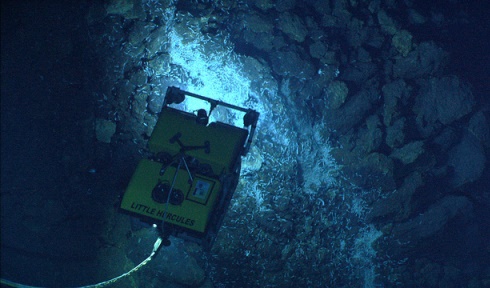Delving deeper

Picture credit: NOAA Ocean Explorer
Submarine canyons contain a greater abundance of life than most of the deep sea. Laetitia Gunton looks at the ecology of these spectacular valleys in the seabed
The Biologist 63(4) p28-31
Submarine canyons are steep valleys in the ocean floor, deeply incising the continental shelf and the sloping area between land and the deep abyssal plain. Imagine the Grand Canyon in Arizona, with its steep-sided rock walls, rugged terrain and characteristic wildlife, submerged many kilometres beneath the ocean surface.
These enormous underwater features are home to an abundance of deep-sea creatures, from microscopic nematode worms squirming between sediment grains to large reefs of brightly coloured cold-water corals clinging onto the vertical rock walls.
The largest submarine canyons can dwarf those found on land – the Zhemchug Canyon in the North Pacific reaches a height of 2.6km compared with the modest 1.86km of Arizona's famous Grand Canyon, and its total volume is a whopping 5,800km[3]...
Want to continue reading this article?
Click to login.


